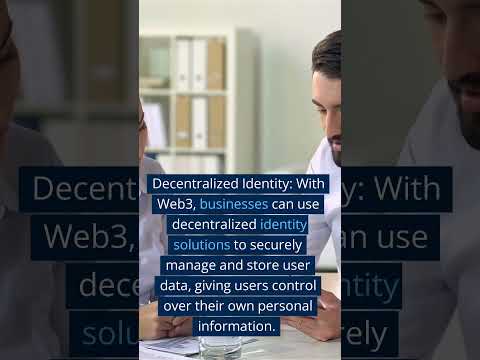
Implementing Web3 Technologies with AWS Cloud Services: A Complete Tutorial with interview Questions | Building Cloud cum DevOps Architects
Folks, This is an ongoing development for this tutorial and Interview FAQs. You can revisit for future additions.
As blockchain technology continues to gain traction, there is a growing need for businesses to integrate blockchain-based solutions into their existing systems. Web3 technologies, such as Ethereum, are becoming increasingly popular for developing decentralized applications (dApps) and smart contracts. However, implementing web3 technologies can be a challenging task, especially for businesses that do not have the necessary infrastructure and expertise. AWS Cloud services provide an excellent platform for implementing web3 technologies, as they offer a range of tools and services that can simplify the process. In this blog, we will provide a step-by-step tutorial on how to implement web3 technologies with AWS Cloud services.
Step 1: Set up an AWS account
The first step in implementing web3 technologies with AWS Cloud services is to set up an AWS account. If you do not have an AWS account, you can create one by visiting the AWS website and following the instructions.
Step 2: Create an Ethereum node with Amazon EC2
The next step is to create an Ethereum node with Amazon Elastic Compute Cloud (EC2). EC2 is a scalable cloud computing service that allows you to create and manage virtual machines in the cloud. To create an Ethereum node, you will need to follow these steps:
Step 3: Deploy a smart contract with AWS Lambda
AWS Lambda is a serverless computing service that allows you to run code without provisioning or managing servers. You can use AWS Lambda to deploy smart contracts on the Ethereum network. To deploy a smart contract with AWS Lambda, you will need to follow these steps:
Step 4: Use Amazon S3 to store data
Amazon S3 is a cloud storage service that allows you to store and retrieve data from anywhere on the web. You can use Amazon S3 to store data related to your web3 application, such as user data, transaction logs, and smart contract code. To use Amazon S3 to store data, you will need to follow these steps:
Step 5: Use Amazon CloudFront to deliver content
Amazon CloudFront is a content delivery network (CDN) that allows you to deliver content, such as images, videos, and web pages, to users around the world with low latency and high transfer speeds. You can use Amazon CloudFront to deliver content related to your web3 application, such as user interfaces and smart contract code. To use Amazon CloudFront to deliver content, you will need to follow these steps:
Step 6: Use Amazon API Gateway to manage APIs
Amazon API Gateway is a fully managed service that allows you to create, deploy, and manage APIs for your web3 application. You can use Amazon API Gateway to manage APIs related to your web3 application, such as user authentication, smart contract interactions, and transaction logs. To use Amazon API Gateway to manage APIs, you will need to follow these steps:
While implementing the Web3 technologies what are the roles need to play on the projects ?
Implementing Web3 technologies can involve a variety of roles depending on the specific project and its requirements. Here are some of the roles that may be involved in a typical Web3 project:
Hence, implementing Web3 technologies involves a wide range of roles that collaborate to create a successful and functional Web3 application. The exact roles and responsibilities may vary depending on the project’s scope and requirements, but having a team that covers all of these roles can lead to a successful implementation of Web3 technologies.
Conclusion
In conclusion, implementing web3 technologies with AWS Cloud services can be a challenging task, but it can also be highly rewarding. By following the steps outlined in this tutorial, you can set up an Ethereum node with Amazon EC2, deploy a smart contract with AWS Lambda, store data with Amazon S3, deliver content with Amazon CloudFront, and manage APIs with Amazon API Gateway. With these tools and services, you can create a powerful and scalable web3 application that leverages the benefits of blockchain technology and the cloud.
We are trying to add more Interviews and Implementation practices related Questions and Answers. Hence keep revisiting this blog.
Web3 technologies, AWS Cloud services, Ethereum node, Amazon EC2, smart contract, AWS Lambda, Amazon S3, Amazon CloudFront, Amazon API Gateway, blockchain, project management, blockchain developer, front-end developer, back-end developer, DevOps engineer, quality assurance, security engineer, product owner, UX designer, business analyst.
This content was originally published here.


